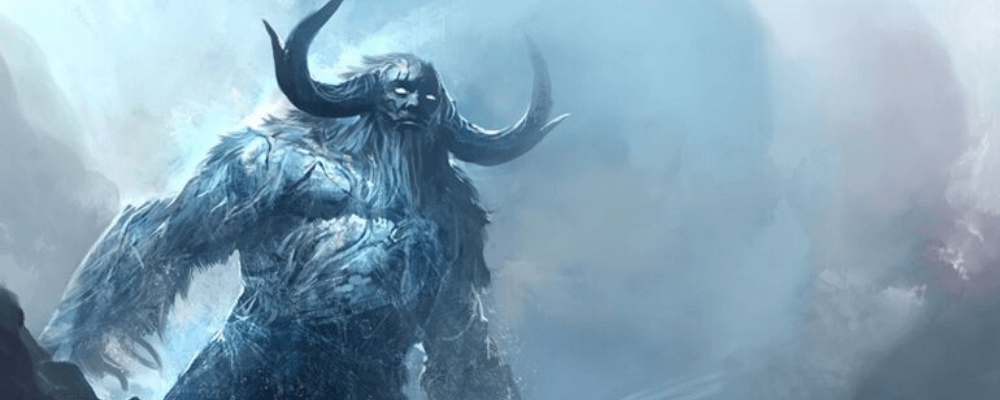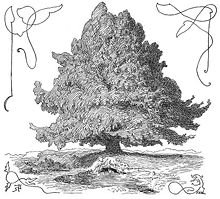Ymir in Norse Mythology: Meaning, Family Tree, Symbols, & Death

The primeval being Ymir gave birth to a group of trolls/giants called jötunn| Image
According to Norse creation story, the giant Ymir was the first being to emerge out of the vast ocean of chaos. Ymir is said to be the product of the ice of Niflheim and the heat produced by Muspelheim. Being the first being in Norse mythology, Ymir is regarded as the father of all the ice giants. And from him came a number of celestial beings, as well as the earth itself.
Below World History Edu looks at the origins of Ymir, as well as how he was killed by the Norse god Odin and his siblings.
Also known as: Aurgelmir, Brimir, Bláinn
Parents: None
Spouse: none
Offspring: giants and trolls (Jötnar), a six-headed son
Symbols: Cow
Epithets: the first jötunn; the progenitor of all giants
Meaning: “sand or gravel screamer” (Aurgelmir), “blood moisture” (Brimir)
How did Ymir come to being?
In the beginning, there existed absolutely nothing. However, out of that nothingness came forth two bodies – the vast, cold region of Niflheim and the extremely hot region of Muspelheim (or Muspell).
The giant Ymir, the first of being, is said to have emerged following the interaction of Élivágar (the icy rivers of Niflheim) and the heat of Muspelheim. He emerged from the drops of water that formed when primordial ice and primordial heat merged.
For sustenance, the giant Ymir fed on the milk produced by a divine primeval cow called Audumla, whose four rivers of milk flowed from her udders. Audumla sustained herself with salt and rime from a primordial stone.

According to Norse creation story, Ymir is the ancestor of all the giants and trolls (Jötnar), who in turn gave birth to the Norse gods (the Aesir and Vanir). Image: Nicolai Abildgaard (1743-1809), Ymer dier koen Oedhumbla, c. 1777
Ymir’s Family
Ymir is popularly known in Norse mythology as the father of all the Norse giants. A hermaphrodite, Ymir did not need any female partner to give birth to all kinds of male and female giants. His offspring came from the perspiration he emitted while sleeping.
Those beings that Ymir created went on to have numerous children, including the Norse gods and goddesses. One of the most notable offspring of Ymir was Búri, the being who emerged from the stone that Audumla licked. Buri, a very large and powerful being, went on to have a son called Bor (Borr).
Upon attaining the age of maturity, Bor married a jötunn called Bestla, one of the daughters of the giant Bölþorn. Together, they gave birth to three sons – Vé, Odin, and Vili. Odin emerged as the leader and the most powerful god in the pantheon. His brothers Ve and Vili became rulers of realms in heaven and Earth.
How the death of Ymir led to the creation of Earth

Ymir was slain by Norse gods Odin, Vili, and Vé | Image: Franz Stassen, 1920
Perhaps out of jealousy, the offspring of Ymir, led by Odin and his brothers, concocted a plan to kill Ymir. In some accounts, Odin and his accomplices overthrew the frost giant Ymir due to his very autocratic tendencies and love for carnage.
The blood from the slain giant became a giant river, which in drowned all the giants except one, Bergelmir. The frost giant that survived did so because he had built himself and his family a big ark (lúðr) to protect them from the deluge. The task of repopulating the jötnar population fell squarely on the shoulders of Bergelmir and his (unnamed) wife.
From Ymir’s legs came forth a six-headed son. Odin and his brothers then lifted Ymir’s body and deposited in a vast cosmic void call Ginnungagap. From there, the brothers used the frost giant’s body to form the earth. The blood that was left became the world’s oceans and seas. Shortly after, Ymir’s hair turned into the trees.
From the giant’s bones emerged the mountains; and from his teeth and skull, stones and the sky were formed respectively. According to some accounts, a group of four giants held up Ymir’s skull (i.e. the sky).
Odin and his brothers then fashioned out the fence of Midgard from the eyelashes/eyebrows of Ymir. The giant’s brain ended up in the sky as the clouds.
At a nearby sea, Odin and his brothers created the first humans – Ask and Embla – out of two logs (or two tree trunks) that had drifted onto the beech. One of the brothers, Vili, breathed into the creation, giving the humans the breath of life. The other brother, Vé, gifted the humans the five senses, i.e. the ability to speak, see, hear, think, and feel.
Read More: The creation of Ask and Embla, the first humans in Norse mythology
Facts about Ymir, the first giant in Norse mythology

Image – Ymir is attacked by the brothers Odin, Vili, and Vé in an illustration by Lorenz Frølich.
- The commonest symbol of Ymir is said to be a cow. This is in reference to him being the first being of the universe. The cow also highlights his relationship with Auðumbla, a primeval cow, whose milk Ymir sustained himself on.
- The death of Ymir symbolizes the end of tyranny and chaos, thereby ushering in the age of the Norse gods and humans. Had Ymir not been killed by Odin and his brothers, the Earth would not have been made; neither would humans have existed.
- Not only is Ymir regarded as the father of all the Norse giants, he is also in some way the great-grandfather of the Odin, the one-eyed raven god in Norse mythology.
- Much of what we know about Ymir comes from the Poetic Edda (a 13th century compilation of Norse poems and myths), the Prose Edda written by Icelandic poet Snorri Sturluson (1179–1241), and the poetry of skalds (court poems). For example, Ymir’s name appears in four poems in the Poetic Edda – Hyndluljóð, , Vafþrúðnismál, Völuspá, and Grímnismál. In the Prose Edda, however, his name appears in two books – Skáldskaparmál and Gylfaginning.
- In Old Norse, Ymir’s name means “screamer”. He was also known as Aurgelmir, which means “sand or gravel screamer”. Other names of his include Brimir, which means “blood moisture”, and Blainn.
You may also like: 10 Most Powerful Norse Gods and Goddesses



























